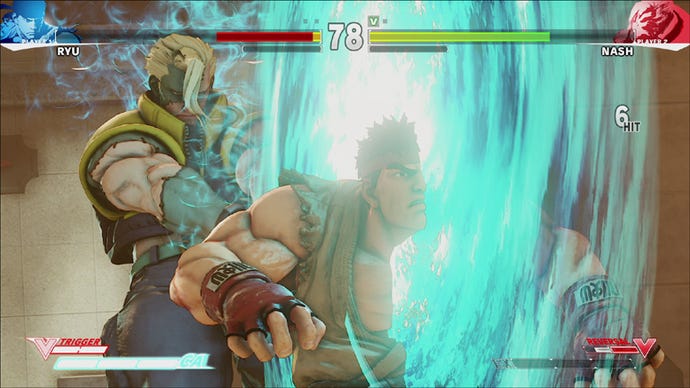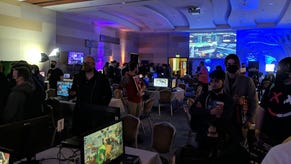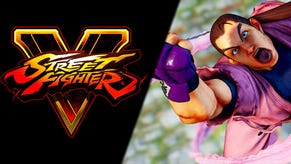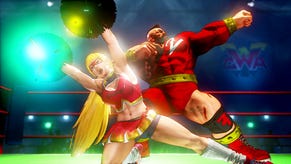Street Fighter 5: fan feedback creates a slick and safe successor
The follow-up to Capcom’s multi-million selling brawler has finally been unveiled as the most laser-targeted, mega-budget, must-succeed production in series history.
"Capcom has resisted extreme statements with Street Fighter V, focusing instead on quality."
It has been seven years. To put this into perspective, the legendary Street Fighter II originally hit the arcades in 1991. Six years later we got Street Fighter III, on new hardware and boasting a challenging new gameplay system to complement the slick new sprites and refined animation. Both games laid foundations for sequels that evolved the experience of smashing opponents in spectacular fashion. The Super Meter that debuted with Super Street Fighter II in 1993 became the bedrock for fighting games ad infinitum. Street Fighter III: Third Strike was so beautifully refined it became a classic.
It would’ve been expecting too much for Capcom to make the same kind of technical leap, and take similar chances from Street Fighter IV to Street Fighter V. And so, despite being powered by Epic Games’ versatile Unreal Engine 4, the look and feel is slick but not astounding. This diminishing returns effect is common across all games this generation, but the point to make here is that Capcom has resisted extreme statements with Street Fighter V, focusing instead on quality.
Capcom’s Associate Director for brand marketing and eSports, Matt Dahlgren, explained to VG247: “We set out to make the best looking Street Fighter of all time. The development team felt Unreal Engine 4 was the best choice for what we wanted to achieve. In SFV, we are pushing the characters more than ever before: of course they need to look amazing in battle, but we wanted them to look even better in cinematic sequences with a close-up camera. The development team worked hard to create highly detailed, next-gen looking characters, while staying true to the artistic stylization Capcom and Street Fighter are known for.”
Returning characters Ryu, Chun-Li and M. Bison are joined by fan favourite Charlie Nash (and others yet to be announced). Their repertoire of standard moves through Critical Arts is mostly familiar, though significantly empowered owing to new V-System (variable) mechanics. But before we go into all that, there are surprises in store for players that favour charge commands, especially concerning Nash where his entire arsenal has become motion based inputs. Slightly less extreme is that Chun-Li’s Hyakuretsukyaku (Lightning Legs) is no longer a mash but a quarter-circle plus Kick command.
“Familiar but fresh,” suggested Capcom about Street Fighter V during our secret London rendezvous. “Streamlined commands lower the execution barrier and provide a beginner friendly experience.” Hence we have the V-System with its respectable goal of being easy to learn, harder to master. “The variable system allows you to unlock the true potential of your character, and provides a lot of variety in terms of gameplay options,” details Dahlgren.
At the heart of the V-System is the V-Skill, replacing the Focus Attack of Street Fighter IV. This has a wide-reaching effect on how combos are constructed because it removes the EX Focus technique used to cancel certain special attacks. Instead, V-Skill shakes things up with character-specific moves such as Ryu’s Mind’s Eye counter (similar to SFIII parry) and Chun-Li’s Rankyaku aerial evade. V-Skills can be performed at any time as they don’t require any meter usage. As with the Focus Attack the input command is simply MP+MK. V-Skill moves seem to be mostly defence-oriented so likely to feature a great deal during tactical bouts. They help to build the V-Gauge too.
The V-Gauge is filled by performing moves, eventually allowing players to activate V-Trigger using HP+HK. Capcom describes the V-Triggers as “Special actions unique to each character that augment their personal fighting style and help turn the tide of battle.” In the case of Ryu, his Denjin Renki electrifies his body adding bonus damage to all moves plus guard-break capability. Chun-Li has Renkiko that gains extra hits for her attacks. Some V-Triggers are similar to the Custom Combos from Street Fighter Alpha 2, augmenting existing techniques. Others, such as Nash’s Sonic Move, enable one-off manoeuvres – in his case, brief teleportation. V-Triggers are gambles that must pay off. Your rival knows something’s coming, and can counter intelligently if they know your repertoire. In this way they’re different to the Critical Arts that require mad timing, unstoppable after they connect.
Not a great deal has changed in the execution of show-stopping Critical Arts. They’re a double-fireball motion plus one button activation, sit back and enjoy the show. Critical Arts are fuelled by the EX Gauge, which is filled by taking damage. Chun-Li’s chin-cracking Hoyokusen is one example that is served best at the end of another clever combo. Nash’s Judgement Sabre is a theatrical set-piece that sees him vanish in a shroud of darkness only to appear standing behind opponents to cleave a crushing sonic blow from skull to toes. The ones we’ve seen are all brilliant, though Ryu could probably use something new at the risk of upsetting his greatest fans.
Indeed, Capcom is keen to stress how much of Street Fighter V direction owes to community feedback. Here, Dahlgren outlines advances made in Street Fighter V “in line with fan requests”:
- “Players can now quick rise from virtually all attacks that knockdown (except for Critical Arts). In SFIV, attacks such as sweeps and throws left players in an un-techable knockdown state. This led to what we call 'setplay' where players could mount a pre-set offense that was very difficult to defend against. With the inclusion of delayed wake up in USFIV, this helped to counter act this to a degree. But in SFV, players will have many more options on wake up and the opponent will have to learn the other player’s tendencies on wake up if they want to be victorious and not just rely on canned setups.”
- “The inability to use EX meter to safely cancel moves (FADC) is a pretty big change from SFIV. People will have to commit to their decisions a lot more, but in exchange, the execution barrier isn’t as high just to be competitive – many newcomers found FADC’s to be very difficult to perform and it was an essential element of SFIV.”
- “Taking recoverable damage from normal moves is a big change. It helps keep the tension of the battle high and promotes aggressive gameplay which we think will lead to very exciting bouts. Many players felt SFIV was too defensive and this is an effective way to counter that.”
We came away from our presentation day convinced that the Capcom team is giving Street Fighter V their all in terms of support, including “the largest corporate partnership in fighting game history” – this being the deal with Sony to keep SFV locked to PS4 in the console space. Meanwhile there will be cross-platform play between PC in order to unify what Capcom sees as “a fragmented user base”.
More Street Fighter V details are expected once E3 is underway. Stay tuned to VG247 for the news.














